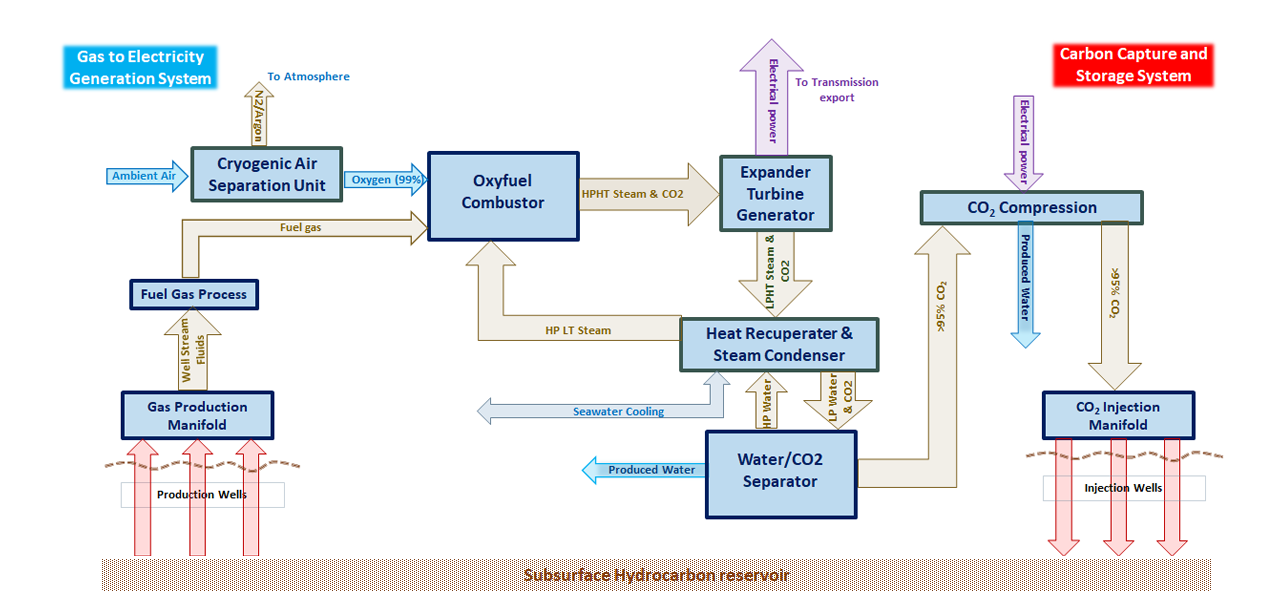SEALS Technology
TiGRE SEALS generates flexible power using indigenous natural gas resources without producing CO2 through the in situ vertical integration of gas production, power generation and transmission (through existing infrastructure associated with offshore windfarms), CO2 capture and sequestration activities within a closed circuit. It offers significant potential as a transitional technology to Net Zero.
SEALS is the product of a feasibility study, joint funded by BEIS and TiGRE Technologies Ltd. through the CCUS Innovation Programme. The study identified oxyfuel generation as the most technically and commercially viable solution, which COULD would be competitive in the current merchant power market for peaking plant without any CO2 subsidies. SEALS relies on oxyfuel direct combustion with H2O as a supplemental working fluid and CO2 capture into liquid phase for direct storage underground, which is an innovative approach. In JANUARY 2021 TTL submitted TWO patent applications relating to the SEALS system and key components.

Oxyfuel Power Generation System with Sequestered Emissions at Locational Source

Our work on TiGRE SEALS has shown that there are some key inventions and innovations, most notably:
Key Inventions and Innovations
- Depleted Gas Reservoirs can be used for medium levels CO2 storage while improving economic recovery of natural gas reserves.
- Gas field assets can have significant life extension opportunities of approximately 20years by employing TiGRE SEALS.
- The feasibility study has theoretically proven that it is possible to continue to produce hydrocarbons from an existing subsurface reservoir, convert these to commercially useful electrical power and capture CO2 to be stored back into the original source reservoir.
- The study has shown that by producing CO2 as a liquid product from the capture process and storing it in dense phase within the reservoir provides the opportunity to enhance gas recovery through re-pressurisation of the hydrocarbon reservoir.
- The study has shown that the concept of producing hydrocarbons, converting to electrical energy, capturing and storing CO2 in a closed circuit provides a technically and economically viable method for a fully contained and managed CO2 lifecycle.
